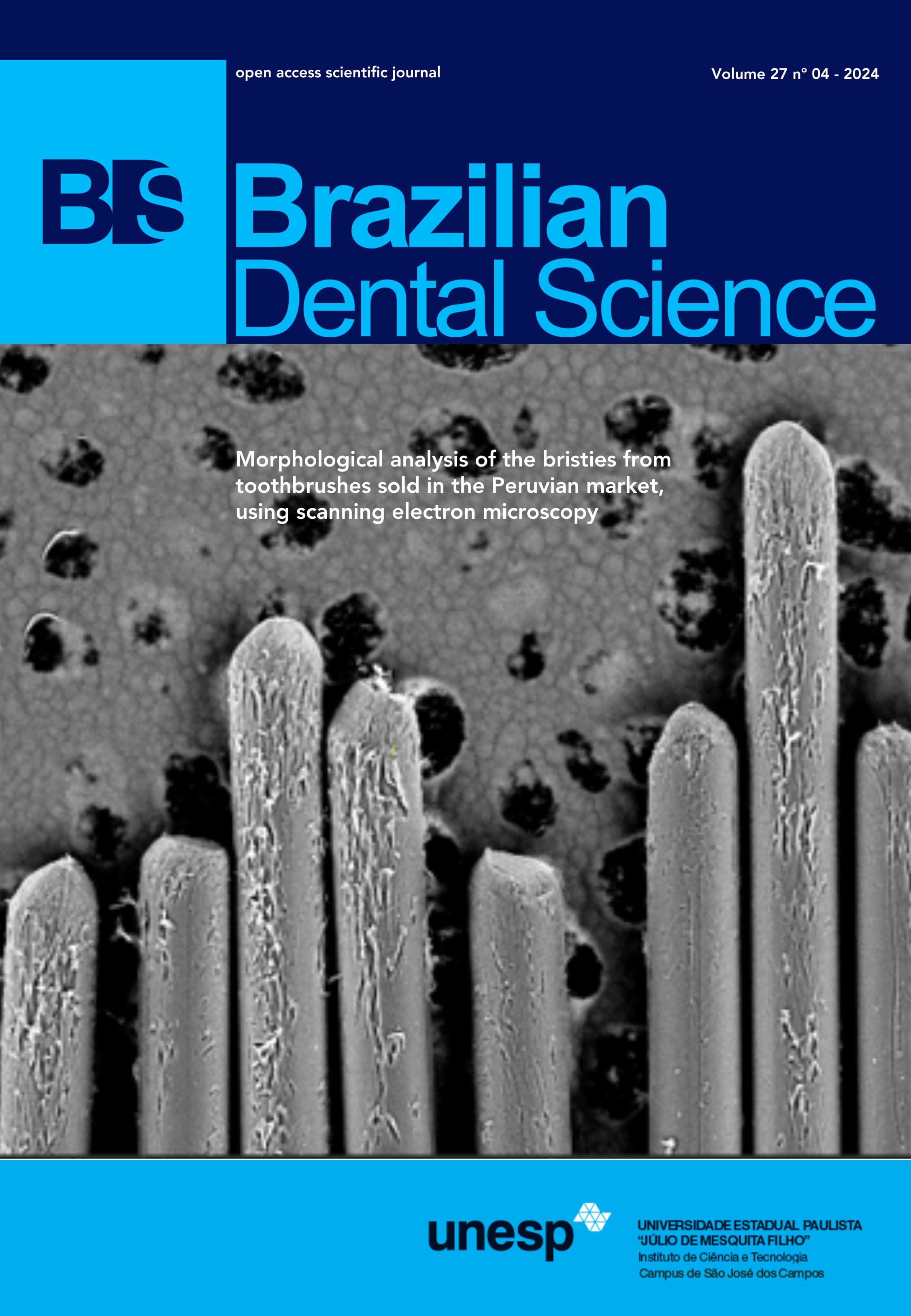Treatment of peri-implant mucosal fenestration with m-VISTA technique – a 2-year follow-up case report
DOI:
https://doi.org/10.4322/bds.2024.e4434Resumo
Background: The modified VISTA technique (modified Vestibular Incision Subperiosteal Tunnel Access) has been introduced as a minimally invasive approach for the treatment of gingival recessions. This technique could also be applied to managing peri-implant soft tissue defects (PSTD). Objetive: This case report presents a 2-year follow-up case in which the m-VISTA technique was used in the treatment of a class 1A PSTD. Description: A 66-year-old female patient complained of food accumulation and a non-aesthetic aspect in the peri-implant buccal region of tooth 11. On clinical examination, there was a peri-implant soft tissue defect, with a recession and fenestration of the buccal mucosa. A Cone Beam Computed Tomography (CBCT) was requested to complement the diagnosis, and a buccal bone defect was observed. Before the surgical phase, basic peri-implant therapy was performed. In surgery, the m-VISTA technique was used, seeking the slightest trauma to the soft tissues around the defect, especially the mucosal margin. The patient returned for suture removal after 14 days. Follow-ups were carried out in the first 14 and 21 days, 2 months, 6 months, and 1 and 2 years after surgery. Results: After two years, there was a complete closure of the peri-implant mucosal fenestration and complete coverage of peri-implant soft tissue recession. Conclusion: This 2-year follow-up case report showed the m-VISTA technique could be a successful approach in the treatment of a peri-implant mucosal fenestration and recession. KEYWORDS Case report; Dental implantation; Gingival recession; Oral surgery; Periodontics.
Downloads
Downloads
Publicado
Como Citar
Edição
Seção
Licença
TRANSFERÊNCIA DE DIREITOS AUTORAIS E DECLARAÇÃO DE RESPONSABILIDADE
Toda a propriedade de direitos autorais do artigo "____________________________________________________________________" é transferido do autor(es) para a CIÊNCIA ODONTOLÓGICA BRASILEIRA, no caso do trabalho ser publicado. O artigo não foi publicado em outro lugar e não foi submetido simultaneamente para publicação em outra revista.
Vimos por meio deste, atestar que trabalho é original e não apresenta dados manipulados, fraude ou plágio. Fizemos contribuição científica significativa para o estudo e estamos cientes dos dados apresentados e de acordo com a versão final do artigo. Assumimos total responsabilidade pelos aspectos éticos do estudo.
Este texto deve ser impresso e assinado por todos os autores. A versão digitalizada deverá ser apresentada como arquivo suplementar durante o processo de submissão.




























